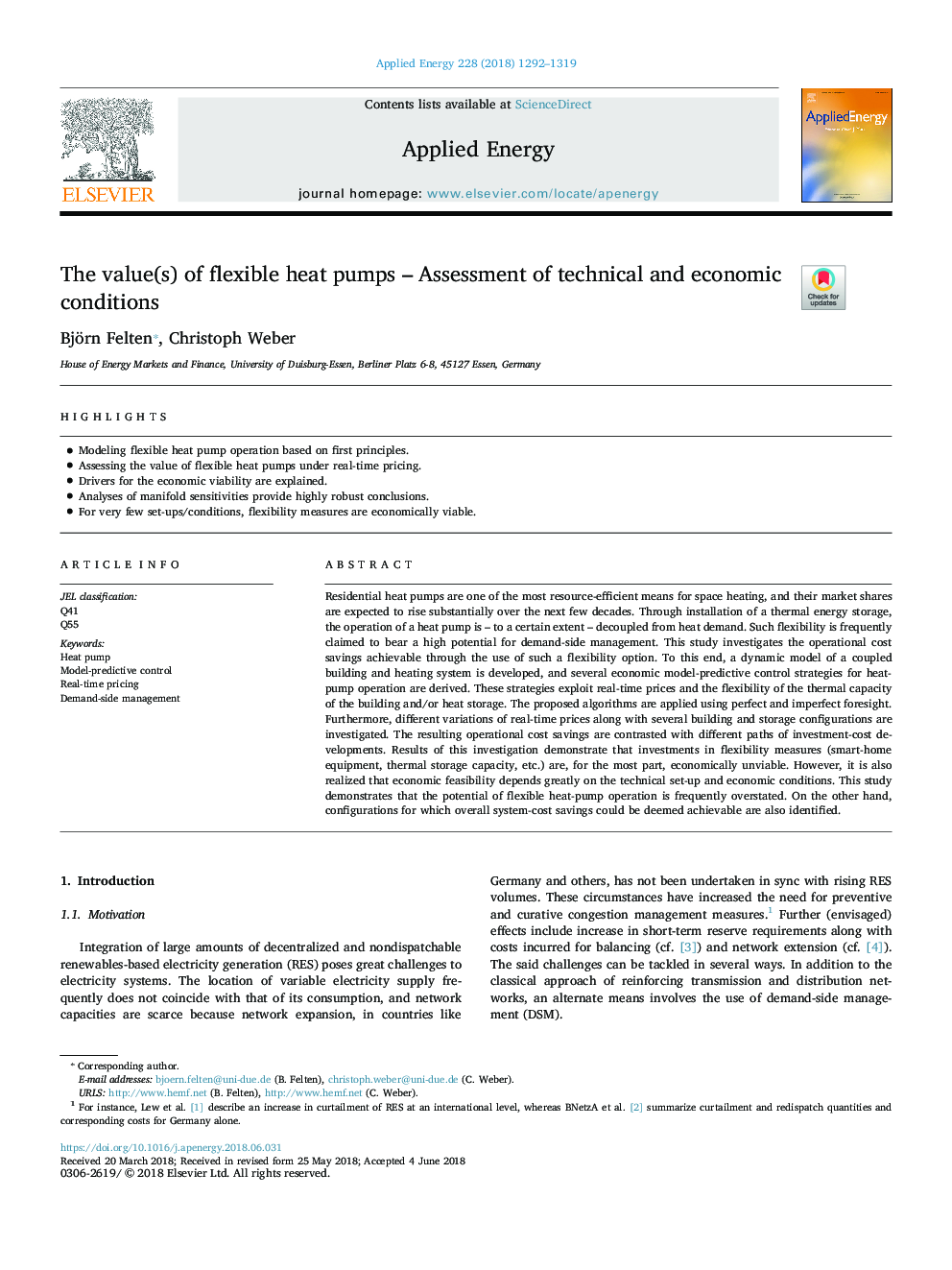| Article ID | Journal | Published Year | Pages | File Type |
|---|---|---|---|---|
| 6679830 | Applied Energy | 2018 | 28 Pages |
Abstract
Residential heat pumps are one of the most resource-efficient means for space heating, and their market shares are expected to rise substantially over the next few decades. Through installation of a thermal energy storage, the operation of a heat pump is - to a certain extent - decoupled from heat demand. Such flexibility is frequently claimed to bear a high potential for demand-side management. This study investigates the operational cost savings achievable through the use of such a flexibility option. To this end, a dynamic model of a coupled building and heating system is developed, and several economic model-predictive control strategies for heat-pump operation are derived. These strategies exploit real-time prices and the flexibility of the thermal capacity of the building and/or heat storage. The proposed algorithms are applied using perfect and imperfect foresight. Furthermore, different variations of real-time prices along with several building and storage configurations are investigated. The resulting operational cost savings are contrasted with different paths of investment-cost developments. Results of this investigation demonstrate that investments in flexibility measures (smart-home equipment, thermal storage capacity, etc.) are, for the most part, economically unviable. However, it is also realized that economic feasibility depends greatly on the technical set-up and economic conditions. This study demonstrates that the potential of flexible heat-pump operation is frequently overstated. On the other hand, configurations for which overall system-cost savings could be deemed achievable are also identified.
Related Topics
Physical Sciences and Engineering
Energy
Energy Engineering and Power Technology
Authors
Björn Felten, Christoph Weber,
